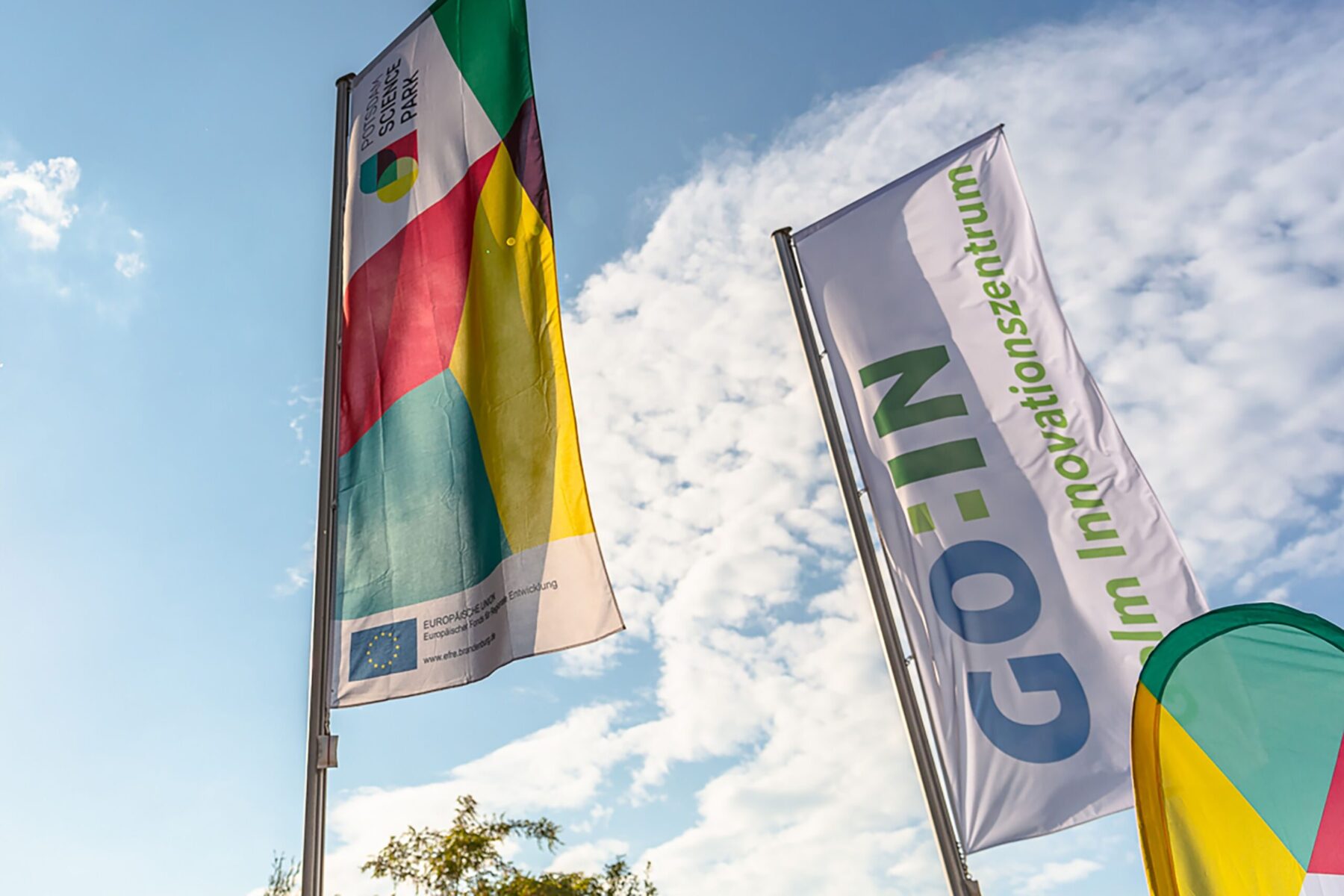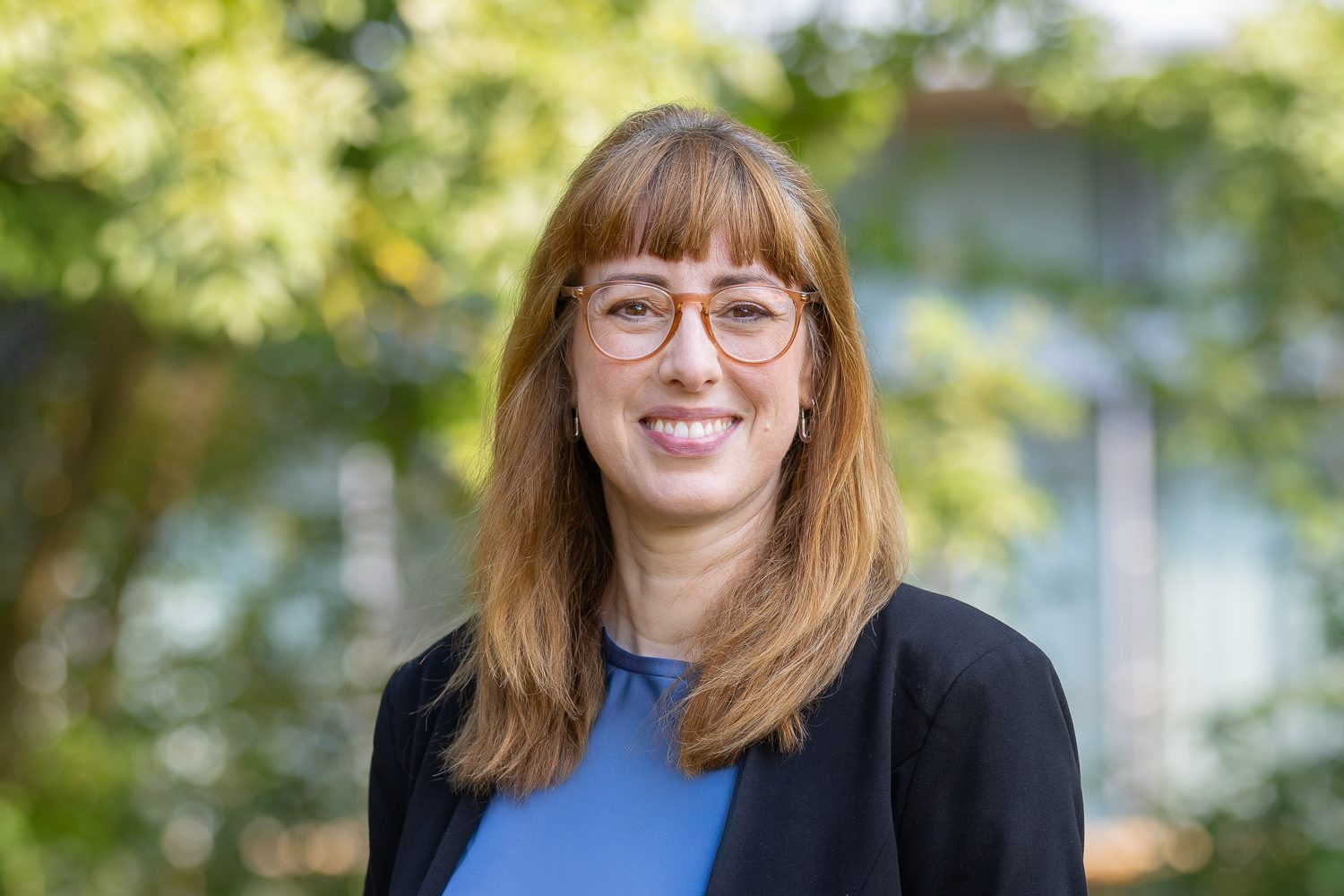
From Life Science to Industry 4.0 — The Solutions New Companies in the Potsdam Science Park Are Using to Shape the Future
Press release | How can artificial intelligence be used to speed up approval procedures for drugs? What opportunities does 2D printing of drugs offer and how can algorithms accelerate the early detection of osteoporosis? What advances have been made in cancer cell diagnostics and digital transformation solutions? The companies biotx.ai, QMEDIS Analytics, Porous, GILUPI and Vragments are working on future solutions that will change industries.
The companies biotx.ai, QMEDIS Analytics, Porous, GILUPI and Vragments are among a whole series of companies that have moved into new laboratory and office space in the new buildings in the Potsdam Science Park. The new settlements are an example of the growth and innovative strength at one of the largest science locations in Berlin-Brandenburg.
biotx.ai – using artificial intelligence to shorten drug approval procedures
Artificial intelligence is one of the big trend topics of our time. But what exactly can it achieve? The international company biotx.ai uses AI to radically shorten the approval procedures for drugs. Currently, a drug goes through three stages of clinical trials. It currently takes an average of about fifteen years for a drug to go through these phases and come onto the market. Companies are investing gigantic sums in this approval process, an average of 4.8 billion dollars.biotx.ai, based in the Potsdam Science Park, uses its AI platform to recognize complex patterns in genomic data and can thus make precise predictions about the effectiveness of new therapies. Because which diseases you get in the course of your life and how medications work for diseases is usually always genetically determined. biotx.ai’s approach could therefore radically shorten the time for such studies and thus revolutionize an entire industry. Chief Operating Officer Christian Hebenstreit explains: “In one of our most successful projects, we achieved something in three months with three employees that previously took the industry several years to achieve. The results are currently being clinically tested at the University Hospital Brandenburg an der Havel, which is unique for a company like ours.”
QMEDIS Analytics – the contract laboratory working on 2D printing of drugs
QMEDIS Analytics was one of the first companies to move into the newly built H-LAB in the Potsdam Science Park in January 2022. The contract laboratory specialises in analysing and developing medicines. On the one hand, they rely on state-of-the-art analytical methods – for example, near-infrared spectroscopy (NIRS). On the other hand, they offer a very wide range of analytical services, based in particular on spectroscopic and chromatographic analysis methods.The company sees the greatest potential for innovation in drug development and is working on a process for 2D printing drugs. Managing Director Dr. Dennis Stracke explains this as follows: “The end result of 2D-printed medicines can be thought of as edible paper that is placed under the tongue or inside the cheeks of the oral cavity when used. The active ingredient is already released in the mouth and absorbed through the oral mucosa.” The advantage is that medicines can be produced more individually for patients. On the other hand, it is much easier to take and offers many advantages for patients with swallowing difficulties or children. By October, the company will expand by a further 250 m2 of office space to a total area of over 600 m2.
GILUPI – groundbreaking possibilities for cancer cell diagnostics
Scientists around the world are researching ways to better treat cancer. The team of GILUPI, founded in 2006, has also specialized in this area. With their product, medical staff can remove cancer cells from the blood. To do this, the medical staff inserts a metallic wire into the vein via the access. It remains there for 30 minutes. “There are antibodies on the surface of the wire that recognize other proteins,” explains Dr. Christian Jurinke, the company’s managing director.”They act like catchers who notice certain structures and bind the tumor cells to themselves. We can then isolate and examine them,” Dr. Jurinke continues. The advantage of GILUPI’s solution is that it is very gentle to remove tumor cells. In the usual biopsies, a needle is inserted into the tissue, then tissue cells are removed and analyzed. Dr. Christian Jurinke: “This is a procedure that can be painful and unpleasant and is also not free of complications. With our approach, this is much easier. This means that therapy progress can be tracked continuously and changes can be reacted to at an early stage. We think that our way of cancer cell diagnostics is groundbreaking.”
POROUS – Early detection of osteoporosis thanks to modern ultrasound technology
Today, osteoporosis affects billions of people around the world and causes economic damage amounting to around 60 billion US dollars annually. Osteoporosis patients suffer from dwindling bone mass. The microarchitecture of their bone tissue slowly dissolves, so the bones are more likely to break. In older people, osteoporosis is now the most common cause of bone fractures – and even after these have long since healed, patients often still suffer from chronic pain and can only perform everyday activities to a very limited extent. For a long time, early diagnosis was considered almost impossible with conventional means. The MedTech start-up Porous GmbH, a spin-off of the renowned Charité Berlin, now wants to change that. With its intelligent algorithms that use quantitative ultrasound technology, osteoporosis can be detected at an early stage. This enables users to measure the quality of the bone cortex at the microscopic pore level and without radiation exposure. “For the first time, we are medically able to measure the thickness of the so-called cortex, the tissue directly under the bone surface, as well as its microscopic pore size distribution,” explains CEO Bart Hendriks.
Vragments – retelling the story(s) with virtual reality
Behind Vragments GmbH is a diverse team of IT developers, media scientists, designers and experts with experience in storytelling. They use digital and automated solutions in a creative way to shape transformation processes of medium-sized companies. In the past, for example, they have developed virtual reality solutions and designed and implemented interactive 3D products. With their tool Fader, companies can quickly and easily build interactive 360° experiences – the tool is now in use at Deutsche Welle and Euronews. The start-up is also behind the immersive 3D visualization of BER Airport and, in cooperation with Deutschlandradio Kultur, has created a VR experience about interrogation methods of the former Ministry of State Security of the GDR (Stasi).In the future, founder Prof. Linda Rath wants to focus more on the needs of Industry 4.0 companies: “In recent years, we have noticed that on the way to real digital transformation, the basis for the digitization of data and the digitization of business processes is still missing in many places,” says the entrepreneur. “We start where in-house IT is no longer sufficient and where enterprise solutions are not flexible enough or bring too much ballast. We see enormous potential in the area of SMEs and also in larger companies or municipal utility companies.”
Press
Karen Esser, Referentin PR & Kommunikation
Standortmanagement Golm GmbH — Potsdam Science Park
About the Potsdam Science Park
The Potsdam Science Park is one of the largest science locations in the capital region of Berlin-Brandenburg. Here, cutting-edge international research, university education as well as research-oriented start-ups and companies combine to form an excellent community. On a total area of 60 hectares, the innovation site is home to two Fraunhofer Institutes, three Max Planck Institutes, the Faculty of Mathematics and Natural Sciences and the Faculty of Human Sciences at the University of Potsdam, the Brandenburg State Archive and a growing number of start-ups and companies in the new office and laboratory buildings and on the new Technology Campus. Networking and mutual exchange between renowned research institutions and innovative companies are the focus of the Potsdam Science Park. Over the next ten years, 100 small and medium-sized companies as well as an anchor company are to settle in the Potsdam Science Park and create around 1000 new jobs.
The projects of Standortmanagement Golm GmbH in the Potsdam Science Park are co-financed by the European Regional Development Fund and with funds from the state of Brandenburg.

Karen Esser
PR & Communications
karen.esser@potsdam-sciencepark.de + 49 331 237 351 103